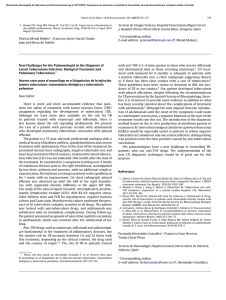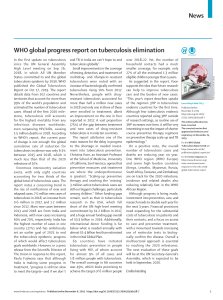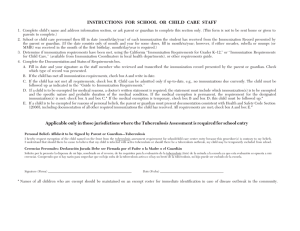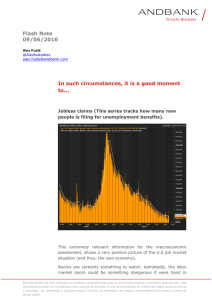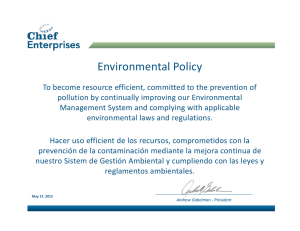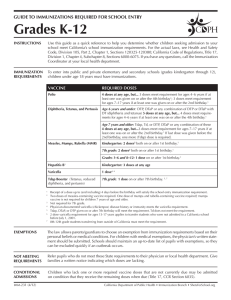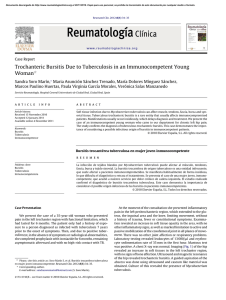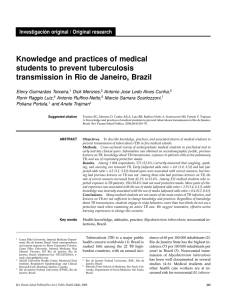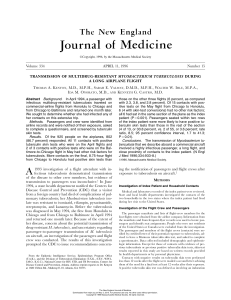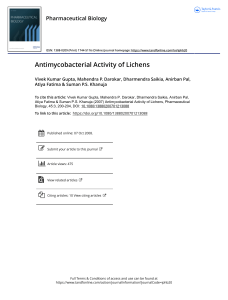The Exception Does Not Prove the Rule La excepción no confirma
Anuncio
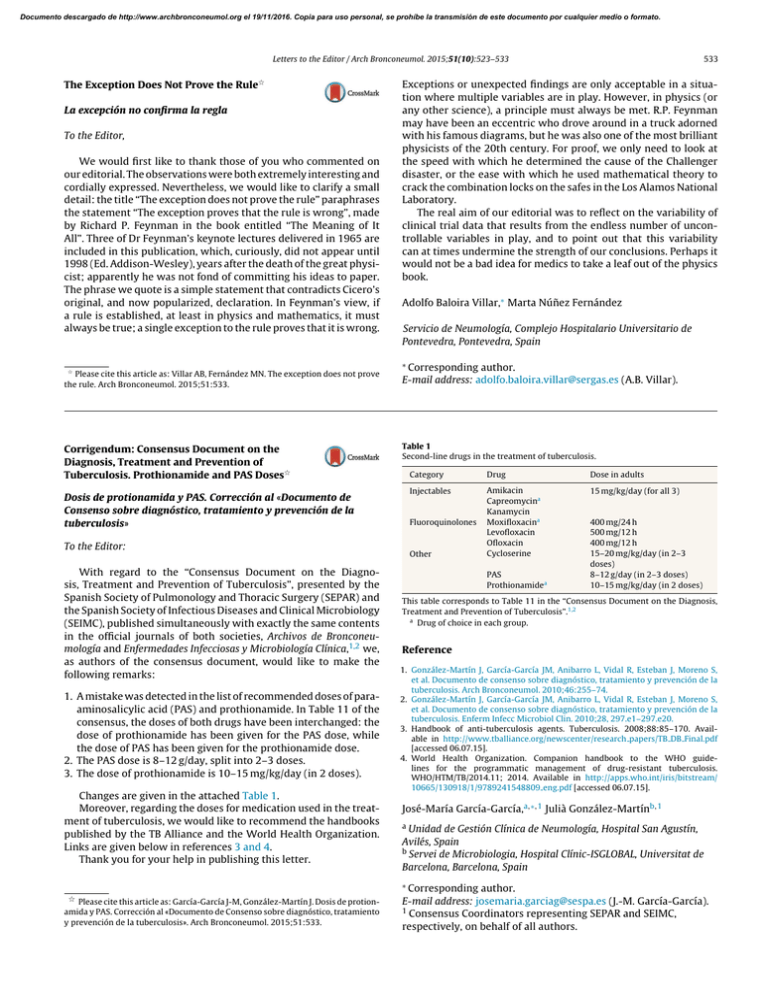
Documento descargado de http://www.archbronconeumol.org el 19/11/2016. Copia para uso personal, se prohíbe la transmisión de este documento por cualquier medio o formato. Letters to the Editor / Arch Bronconeumol. 2015;51(10):523–533 The Exception Does Not Prove the Rule夽 La excepción no confirma la regla To the Editor, We would first like to thank those of you who commented on our editorial. The observations were both extremely interesting and cordially expressed. Nevertheless, we would like to clarify a small detail: the title “The exception does not prove the rule” paraphrases the statement “The exception proves that the rule is wrong”, made by Richard P. Feynman in the book entitled “The Meaning of It All”. Three of Dr Feynman’s keynote lectures delivered in 1965 are included in this publication, which, curiously, did not appear until 1998 (Ed. Addison-Wesley), years after the death of the great physicist; apparently he was not fond of committing his ideas to paper. The phrase we quote is a simple statement that contradicts Cicero’s original, and now popularized, declaration. In Feynman’s view, if a rule is established, at least in physics and mathematics, it must always be true; a single exception to the rule proves that it is wrong. Please cite this article as: Villar AB, Fernández MN. The exception does not prove the rule. Arch Bronconeumol. 2015;51:533. 夽 Corrigendum: Consensus Document on the Diagnosis, Treatment and Prevention of Tuberculosis. Prothionamide and PAS Doses夽 Exceptions or unexpected findings are only acceptable in a situation where multiple variables are in play. However, in physics (or any other science), a principle must always be met. R.P. Feynman may have been an eccentric who drove around in a truck adorned with his famous diagrams, but he was also one of the most brilliant physicists of the 20th century. For proof, we only need to look at the speed with which he determined the cause of the Challenger disaster, or the ease with which he used mathematical theory to crack the combination locks on the safes in the Los Alamos National Laboratory. The real aim of our editorial was to reflect on the variability of clinical trial data that results from the endless number of uncontrollable variables in play, and to point out that this variability can at times undermine the strength of our conclusions. Perhaps it would not be a bad idea for medics to take a leaf out of the physics book. Adolfo Baloira Villar,∗ Marta Núñez Fernández Servicio de Neumología, Complejo Hospitalario Universitario de Pontevedra, Pontevedra, Spain author. E-mail address: [email protected] (A.B. Villar). ∗ Corresponding Table 1 Second-line drugs in the treatment of tuberculosis. Dosis de protionamida y PAS. Corrección al «Documento de Consenso sobre diagnóstico, tratamiento y prevención de la tuberculosis» 1. A mistake was detected in the list of recommended doses of paraaminosalicylic acid (PAS) and prothionamide. In Table 11 of the consensus, the doses of both drugs have been interchanged: the dose of prothionamide has been given for the PAS dose, while the dose of PAS has been given for the prothionamide dose. 2. The PAS dose is 8–12 g/day, split into 2–3 doses. 3. The dose of prothionamide is 10–15 mg/kg/day (in 2 doses). Changes are given in the attached Table 1. Moreover, regarding the doses for medication used in the treatment of tuberculosis, we would like to recommend the handbooks published by the TB Alliance and the World Health Organization. Links are given below in references 3 and 4. Thank you for your help in publishing this letter. 夽 Please cite this article as: García-García J-M, González-Martín J. Dosis de protionamida y PAS. Corrección al «Documento de Consenso sobre diagnóstico, tratamiento y prevención de la tuberculosis». Arch Bronconeumol. 2015;51:533. Category Drug Dose in adults Injectables Amikacin Capreomycina Kanamycin Moxifloxacina Levofloxacin Ofloxacin Cycloserine 15 mg/kg/day (for all 3) Fluoroquinolones To the Editor: With regard to the “Consensus Document on the Diagnosis, Treatment and Prevention of Tuberculosis”, presented by the Spanish Society of Pulmonology and Thoracic Surgery (SEPAR) and the Spanish Society of Infectious Diseases and Clinical Microbiology (SEIMC), published simultaneously with exactly the same contents in the official journals of both societies, Archivos de Bronconeumología and Enfermedades Infecciosas y Microbiología Clínica,1,2 we, as authors of the consensus document, would like to make the following remarks: 533 Other PAS Prothionamidea 400 mg/24 h 500 mg/12 h 400 mg/12 h 15–20 mg/kg/day (in 2–3 doses) 8–12 g/day (in 2–3 doses) 10–15 mg/kg/day (in 2 doses) This table corresponds to Table 11 in the “Consensus Document on the Diagnosis, Treatment and Prevention of Tuberculosis”.1,2 a Drug of choice in each group. Reference 1. González-Martín J, García-García JM, Anibarro L, Vidal R, Esteban J, Moreno S, et al. Documento de consenso sobre diagnóstico, tratamiento y prevención de la tuberculosis. Arch Bronconeumol. 2010;46:255–74. 2. González-Martín J, García-García JM, Anibarro L, Vidal R, Esteban J, Moreno S, et al. Documento de consenso sobre diagnóstico, tratamiento y prevención de la tuberculosis. Enferm Infecc Microbiol Clin. 2010;28, 297.e1–297.e20. 3. Handbook of anti-tuberculosis agents. Tuberculosis. 2008;88:85–170. Available in http://www.tballiance.org/newscenter/research papers/TB DB Final.pdf [accessed 06.07.15]. 4. World Health Organization. Companion handbook to the WHO guidelines for the programmatic management of drug-resistant tuberculosis. WHO/HTM/TB/2014.11; 2014. Available in http://apps.who.int/iris/bitstream/ 10665/130918/1/9789241548809 eng.pdf [accessed 06.07.15]. José-María García-García,a,∗,1 Julià González-Martínb,1 a Unidad de Gestión Clínica de Neumología, Hospital San Agustín, Avilés, Spain b Servei de Microbiologia, Hospital Clínic-ISGLOBAL, Universitat de Barcelona, Barcelona, Spain ∗ Corresponding author. E-mail address: [email protected] (J.-M. García-García). 1 Consensus Coordinators representing SEPAR and SEIMC, respectively, on behalf of all authors.
